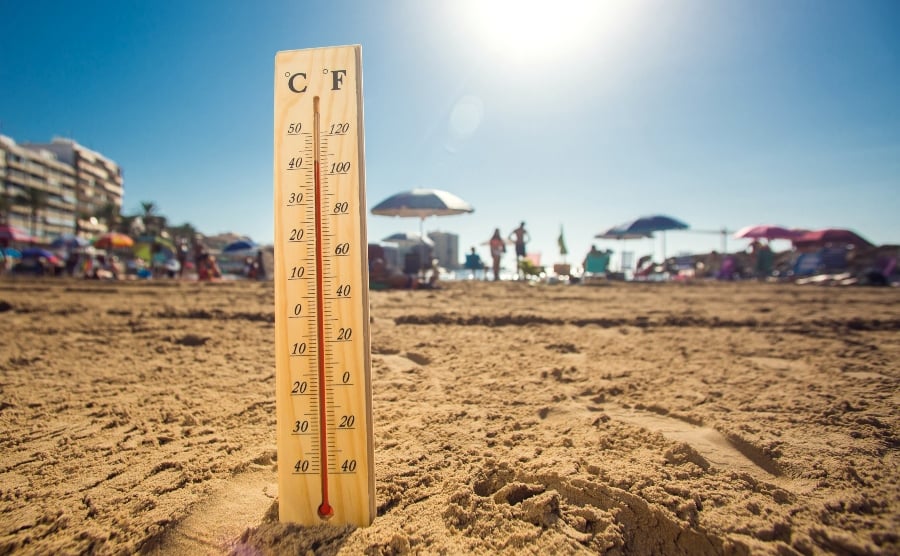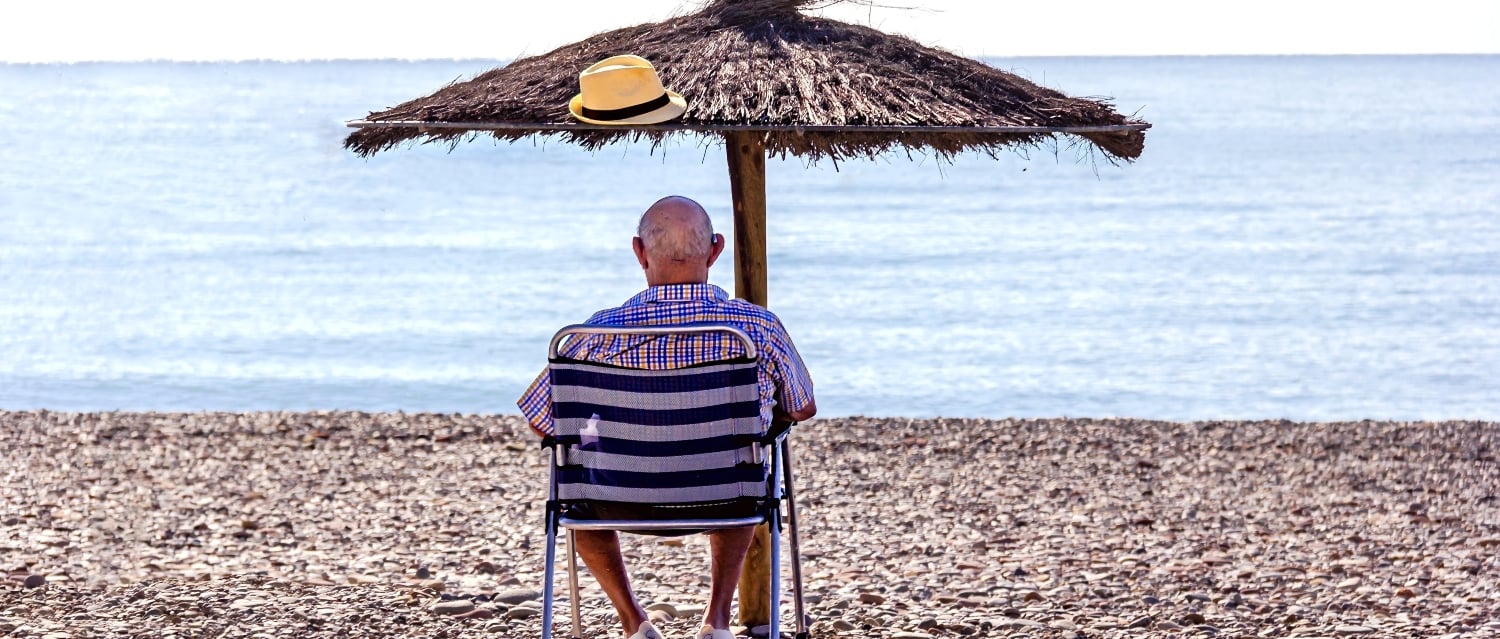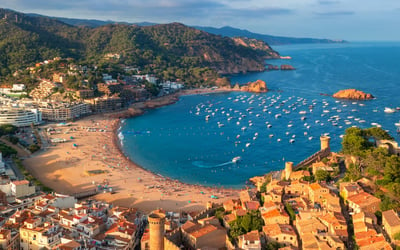With temperatures soaring and another scorching Spanish heatwave well under way, it’s time to stop acting like a tourist and start living like a local. Our writer Sally, who calls Spain home, shares practical and delightful tips that Spaniards swear by – helping you truly enjoy your new life, no matter how hot it gets.
Spain’s second heatwave of the summer is about to cover the country, with temperatures up to 44°C in parts of the south. Even the normally cooler northeastern region of Galicia is likely to see temperatures in the high 30°s.
For the people of Spain, these heatwaves are nothing new, although they have perhaps become more intense in recent years. Locals know how to keep cool and how to spend their time during these very hot spells. “You can always spot a foreigner,” my neighbour said yesterday. “They are outside when we are inside, they walk on the sunny side of the street and will find the sunniest spot on any bar’s terrace”. She is right. So, let’s take a look at how we treat extremely hot days…
What? Cold soup!
Yes, Spanish people enjoy light meals and cold soups in the summer, such as gazpacho, salmorejo and ajo blanco. These soups and many others are not only consumed at meal times but also sipped at any time. Cooling, refreshing and hydrating, they are essential to keep the inner body comfortable. You can buy gazpacho in every supermarket but why not try making your own? It’s easy to make!
It is sunny, so why close the blinds?
During a heatwave, locals often close their blinds or shutters to keep the heat at bay. It’s a simple but effective way to stop the sun from streaming in and raising the indoor temperature. Many Spanish homes are built to cope with the heat, and keeping rooms shaded helps maintain a cooler environment without relying too heavily on air conditioning. It’s all part of the traditional approach to staying comfortable when temperatures soar.
Air conditioning is effective but expensive to run, which is why many older Spanish properties don’t have aircon units. Central ceiling fans are a practical alternative, as are portable fans, which these days are almost completely silent and multidirectional and a much more economical use of energy.
If you have a covered terrace at your home, you can keep the air cooler by installing a fan with a water tank. As it turns, it sends out a spray of cool water.
Keep your hat on!
A hat will not only keep your head cooler, it will also prevent some of the sun’s rays from burning your face. It is, in fact, the best beauty tip for anyone living in sunny climes. Choose a hat with a wide brim or follow Asia’s practice of using a parasol when out and about.
But I want a tan!
You will pick up a tan even if you only walk in the shade and this is something all locals will do – stay on the shady side of the street. When the sun is beating down, the pavements become hot and because hot air rises, you are getting a double dose of heat.
If you want a tan, go to the beach or your terrace early in the morning or after 5pm. Always use sun cream and don’t stay out in the sun for more than 30 minutes at a time. Your body and skin will thank you. Even when summer temperatures are more comfortable, always take an umbrella to the beach. You will get tanned under its shade.

Temperatures in Spain can reach well into the 40s
Time for a siesta
When it is very hot, it is a good idea to take a siesta after lunch. Did you know that the ideal time spent should be 20 minutes? Most people will doze for longer but doctors insist that 20 minutes is perfect for recharging without feeling sleepy when you wake. Intense heat is draining, so time spent relaxing with your eyes closed is one of the best ways to cope.
Loose and cool
Lightweight clothes which cover most of your body are what the locals will wear during a heatwave. Long, floaty dresses, loose-fitting trousers and cotton or linen tops are all designed to maintain a sensible body temperature. Shorts are OK too, but remember to cover your legs with sun cream. Spanish markets are a good source for these summer staples, as many local people find their summer clothes there. Local shops will also carry a good range, and in August, many will be holding a sale, so it is a good time to find a bargain.
An evening stroll
Most Spanish towns come alive after 8pm in the summer. When the sun is slipping over the horizon, it’s time for a paseo (stroll) and a glass of wine or beer at a local bar. A gentle stroll in the cooler air will feel great after a day of relentless heat, and sitting and watching the world go by while grazing on some tapas to accompany a cava will feel even better.
This is when an abanico (a handheld fan) comes into its own. The air will still be very warm – if not hot – and maybe there will be little or no breeze, so use your fan to stay cool. You can buy fans very cheaply at markets and Chinese shops but I would suggest you pay a little more for a sturdier model (or substantially more for a hand-painted one to complement your outfit!). There is an art and a whole language to using a fan in Spain. For most of us, though, it’s an easy and pretty way to stay cool.
Summary
So, while the midday sun blazes outside, locals know exactly how to keep their cool. From drawing the blinds and taking a siesta to sipping chilled gazpacho in the shade, it’s all about working with the heat, not against it. It’s a way of life shaped by the sun – and one that you might do well to adopt when the mercury rises.
You might also like:




